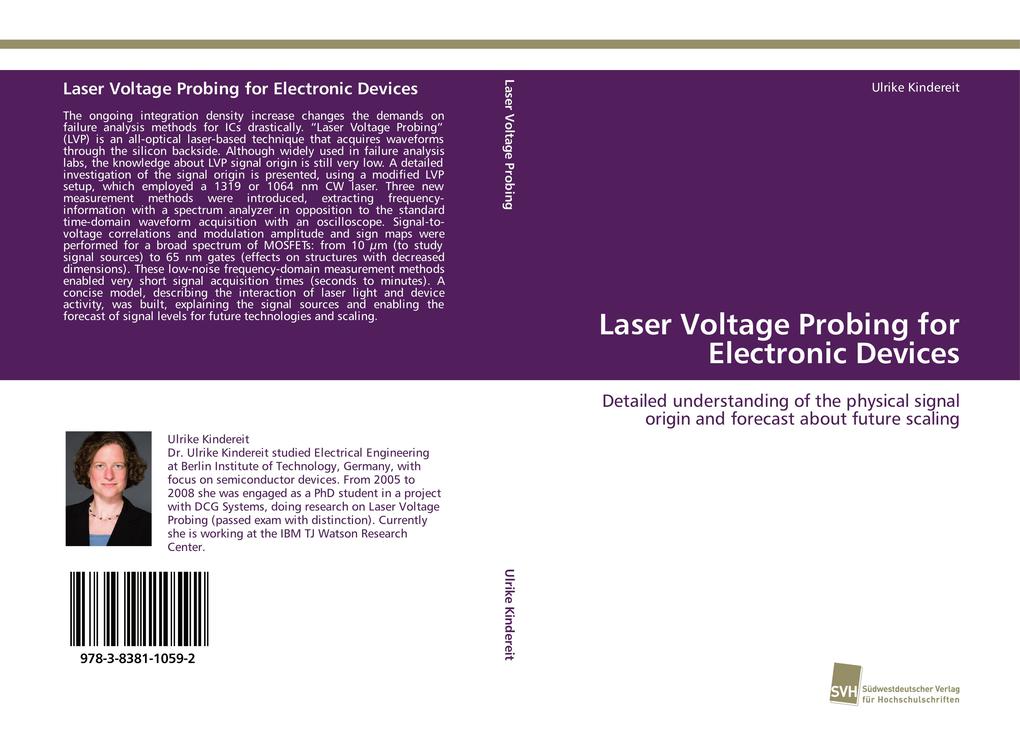
Zustellung: Fr, 15.08. - Di, 19.08.
Versand in 5 Tagen
VersandkostenfreiBestellen & in Filiale abholen:
The ongoing integration density increase changes the demands on failure analysis methods for ICs drastically. Laser Voltage Probing (LVP) is an all-optical laser-based technique that acquires waveforms through the silicon backside. Although widely used in failure analysis labs, the knowledge about LVP signal origin is still very low. A detailed investigation of the signal origin is presented, using a modified LVP setup, which employed a 1319 or 1064 nm CW laser. Three new measurement methods were introduced, extracting frequency-information with a spectrum analyzer in opposition to the standard time-domain waveform acquisition with an oscilloscope. Signal-to-voltage correlations and modulation amplitude and sign maps were performed for a broad spectrum of MOSFETs: from 10 µm (to study signal sources) to 65 nm gates (effects on structures with decreased dimensions). These low-noise frequency-domain measurement methods enabled very short signal acquisition times (seconds to minutes). A concise model, describing the interaction of laser light and device activity, was built, explaining the signal sources and enabling the forecast of signal levels for future technologies and scaling.
Produktdetails
Erscheinungsdatum
19. Januar 2012
Sprache
englisch
Untertitel
Detailed understanding of the physical signal origin and forecast about future scaling.
Paperback.
Sprache: Englisch.
Seitenanzahl
176
Autor/Autorin
Ulrike Kindereit
Verlag/Hersteller
Produktart
kartoniert
Gewicht
280 g
Größe (L/B/H)
220/150/11 mm
Sonstiges
Paperback
ISBN
9783838110592
Entdecken Sie mehr
Bewertungen
0 Bewertungen
Es wurden noch keine Bewertungen abgegeben. Schreiben Sie die erste Bewertung zu "Laser Voltage Probing for Electronic Devices" und helfen Sie damit anderen bei der Kaufentscheidung.










